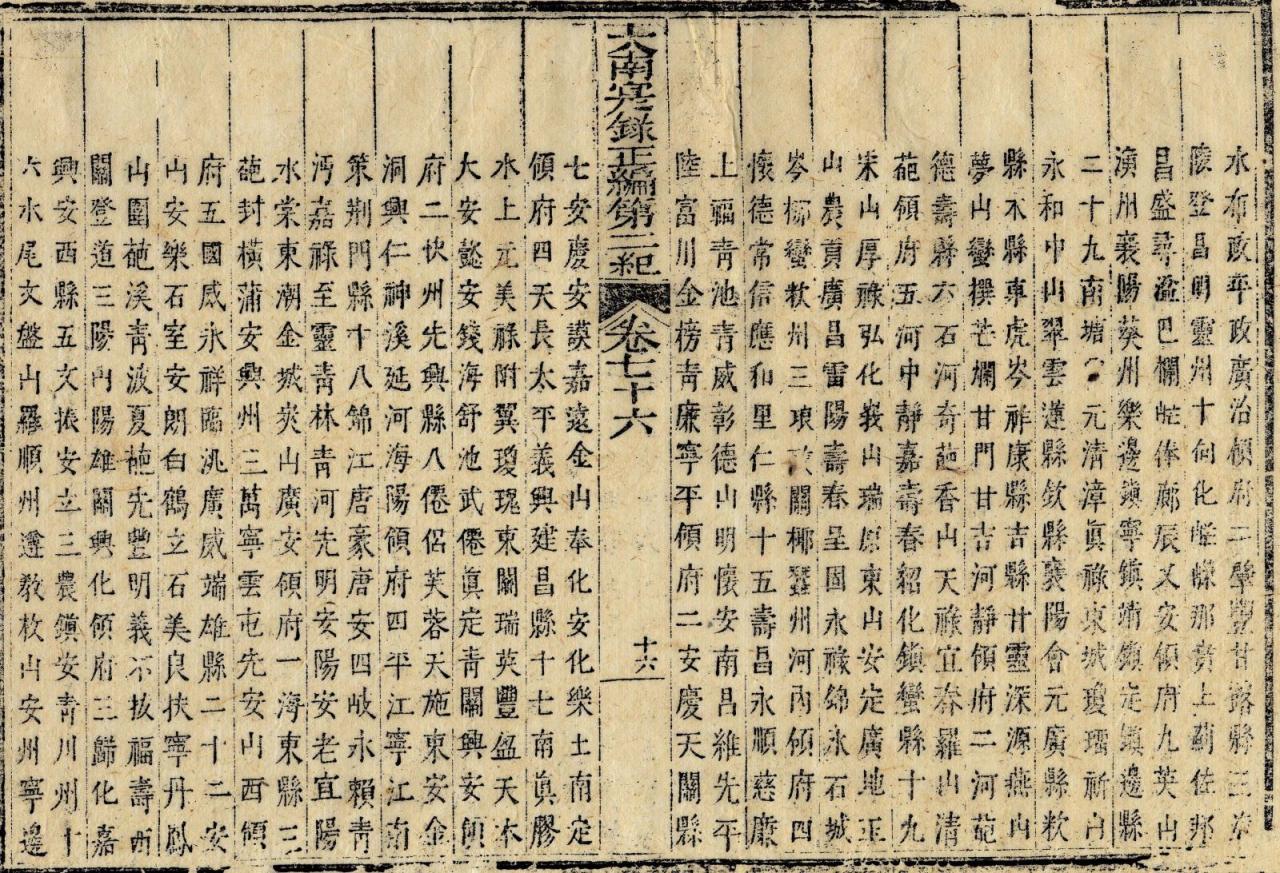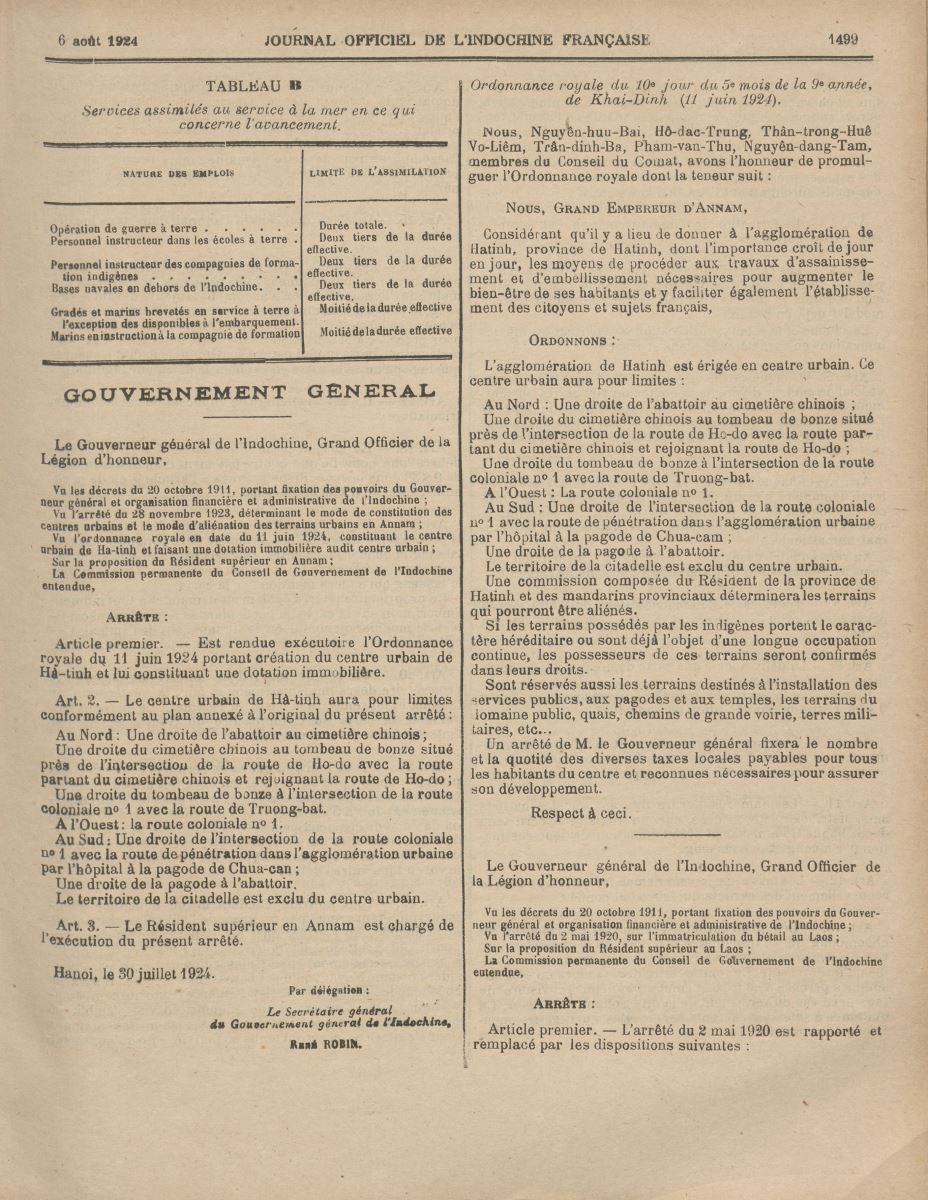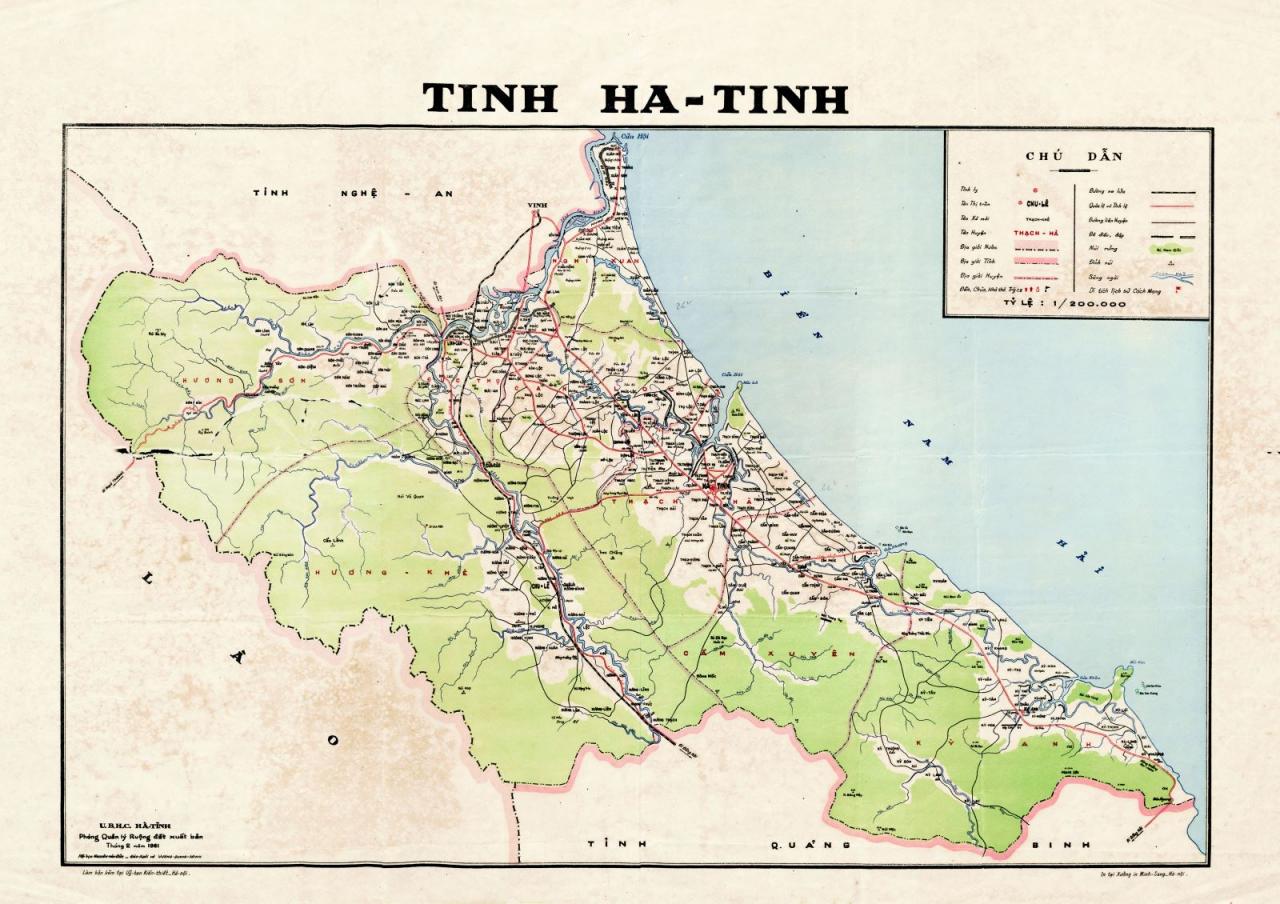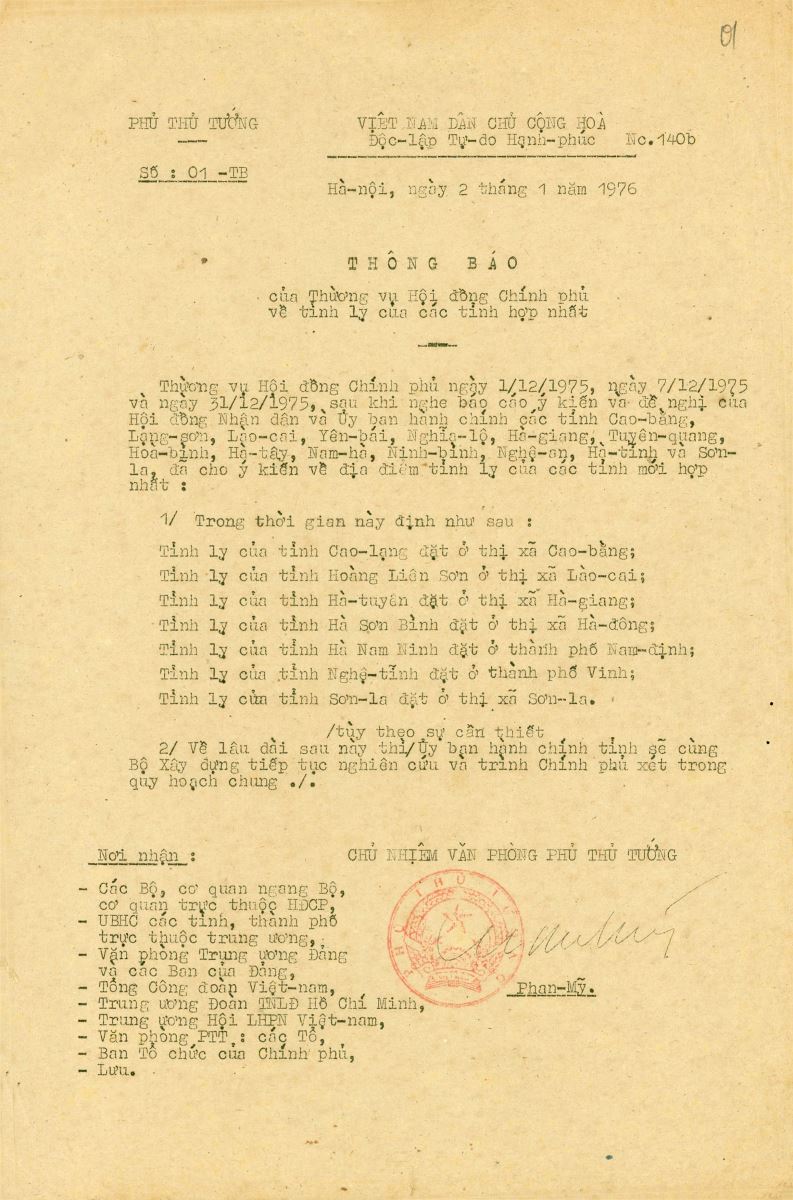The glorious 190-year historical journey of establishment, construction and development of Ha Tinh land is recreated for the first time in the online exhibition space "Ha Tinh through history through archival documents".
On the national highway from North to South through Ben Thuy bridge, from South to North through Hoanh Son Quan, there is a land that is likened to a carrying pole, carrying the two ends of the country. That is Ha Tinh, a land of “spiritual land and talented people” with a cultural and revolutionary tradition, along with nearly two centuries of fighting, building and developing.
190 years have passed (from 1831 - Ha Tinh province was officially established until now), the name Ha Tinh has been associated with many important historical marks of the nation. This barren, rocky land has always been the source of famous poems and literature, of songs raised from hardship and bombs of war.
The glorious 190-year historical journey of establishment, construction and development of Ha Tinh land is recreated for the first time in the online exhibition space "Ha Tinh through history through archival documents".
The formation of Ha Tinh land

In 1831, King Minh Mang began to divide the provinces from Quang Tri to the North. Ha Tinh province consisted of 2 prefectures: Ha Hoa and Duc Tho, including 6 districts: Thach Ha, Ky Hoa, Huong Son, Thien Loc, Nghi Xuan, and La Son (source: National Archives Center IV)
According to historical and archaeological documents, thousands of years ago, people lived in Ha Tinh; the Hong Linh area today is called Kinh Do Ngan Hong - the first capital of Xich Quy country (former name of Vietnam) under King Kinh Duong Vuong. During the time King Hung founded Van Lang country, Ha Tinh area belonged to Bo Cuu Duc.
In 1831, King Minh Mang carried out a large-scale administrative reform, dividing the country into 30 provinces. Ha Tinh province was born on the basis of separating the two prefectures of Ha Hoa and Duc Tho of Nghe An town to form a separate province. For the first time in history, the name Ha Tinh appeared as a provincial-level administrative unit directly under the central court. This was an important milestone in the historical process of Ha Tinh.
When it was first established, Ha Tinh province consisted of 02 prefectures (Ha Hoa and Duc Quang), 06 districts (Huong Son, La Son, Thien Loc, Nghi Xuan, Thach Ha, Ky Hoa). As a small province, the Governor of Nghe An concurrently held the position of Ha Tinh, called Governor of An Tinh, under which there was a Governor in charge of the work of Bo Chinh and An Sat.
In 1853, King Tu Duc abandoned Ha Tinh province, established Ha Tinh province and in 1875 changed its administrative name to Ha Tinh province. Ha Tinh province moved to Trung Tiet commune (today's Ha Tinh city). In 1881, the province was solidly rebuilt with bricks and laterite. The Nguyen Dynasty also paid attention to building a waterway system and a post station system to ensure communication between the Hue court and the localities. The Nguyen Dynasty also proposed a number of agricultural promotion policies, calling on the people who had migrated to return to their hometowns to produce, and encouraged reclamation work in many forms.
Ha Tinh in the national liberation movement

Decree dated May 10, 9th year of Khai Dinh (June 11, 1924) on the establishment of Ha Tinh Urban Center and determining the boundaries of this urban center (source: National Archives Center I)
After King Ham Nghi issued the second Can Vuong Edict (July 1885), a wave of patriotism rose throughout Ha Tinh province. The first person to respond to the Can Vuong Edict in Ha Tinh was Le Ninh in Trung Le, Duc Tho. Then came the vibrant resistance movement, taking place throughout the localities in the province led by patriotic scholars. In particular, the Huong Khe uprising led by Phan Dinh Phung - Cao Thang lasted for 11 years (from 1885 - 1896) and became a typical uprising and the peak of the anti-French movement in the late 19th century of the people of Ha Tinh in particular and the people of the whole country in general.
In the early years of the 20th century, Ha Tinh people continued to respond to patriotic movements against the French such as the Duy Tan - Dong Du movement, the Central Vietnam anti-tax movement...
Since the Party took the lead (1930), our country's revolutionary movements have made new progress; together with the whole country, the Party Committee and people of Ha Tinh actively participated in revolutionary struggles for the right to live and the right to freedom with the Soviet - Nghe Tinh movement (1930 - 1931), the democratic movement (1936 - 1939) and the national liberation movement (1939 - 1945), contributing to the great victory of the August Revolution, gaining independence for the nation. Ha Tinh is one of the four provinces in the country that gained power for the people the earliest.
Ha Tinh in the two resistance wars against France and America

Planning map of Ha Tinh town (source: National Archives Center III)
During the resistance war against French colonialism, Ha Tinh was one of the localities where the French colonialists did not stand for even an hour. The people of Ha Tinh, under the leadership of the Party, actively participated in the resistance movement against French colonialism in the most drastic way. As one of the first provinces in the country to completely eliminate illiteracy in the whole province, President Ho Chi Minh awarded the Second Class Independence Medal. After the victory of the resistance war against France, more than 10 years of peace (1955 - 1965), the army and people of Ha Tinh united to successfully complete many heavy revolutionary tasks: launching rent reduction and land reform, bringing land back to the farmers; fighting the enemy's plots and sabotage; overcoming the consequences of war, restoring and developing the economy and culture.
Regarding administrative boundaries, from 1948 to 1957, Ha Tinh town was no longer directly under the province, but only a commune-level administrative unit of Thach Ha district. On November 21, 1957, Ha Tinh town was re-established on the basis of its current boundaries. From 1962 to 1964, Ha Tinh town continued to expand with the appearance of many new neighborhoods.
During the resistance war against the US to save the country, Ha Tinh was "both the rear and the front line". The army and people of Ha Tinh upheld the spirit of "No car has passed, no house is spared", "Not a pound of rice is missing, not a soldier is missing", "All for the front line, all for victory". The whole province flourished with the movements "Youth three ready", "Women three responsibilities", good production, good fighting and good combat service. Many places have entered history with resounding feats like legends. A typical example is Dong Loc T-junction, which recorded the name of the Youth Volunteer Squad of ten heroic female martyrs with the slogan "living clinging to the bridge, clinging to the road, dying steadfastly and bravely".
Ha Tinh is proud to develop

Notice No. 01/TB dated January 2, 1976 of the Standing Committee of the Government Council on the provincial capitals of the newly merged provinces, in which the provincial capital of Nghe Tinh province is located in Vinh (source: National Archives Center III)
After the great victory in the spring of 1975, in order to carry out the socialist revolution nationwide in terms of administrative management, the Party and the State advocated the unification of small provinces into large provinces, including the unification of Ha Tinh and Nghe An provinces into Nghe Tinh province, and Vinh city was chosen to become the center of Nghe Tinh province. From here, the history of Ha Tinh entered a new period, the period under Nghe Tinh province.
Along with promoting the development of productive forces, expanding the scale of agricultural production cooperatives. In parallel with the expansion of cooperatives in Ha Tinh during the period 1976-1980, the provincial government had a policy of moving people to mountainous areas to expand the cultivated area and re-plan residential areas.
After more than 15 years of merging into a province, on August 12, 1991, the Resolution of the 8th National Assembly of the Socialist Republic of Vietnam decided to separate Nghe Tinh province into two provinces, Nghe An and Ha Tinh. Up to now, Ha Tinh province includes 1 city, Ha Tinh, 2 towns, Hong Linh and Ky Anh, and 10 districts.
After 30 years of re-establishment, the Ha Tinh Party Committee has clearly identified major orientations: "Building Ha Tinh into a province with developed industry, agriculture, services, progressive society, guaranteed national defense and security, becoming one of the developed provinces in the North Central region; improving the entire life of the people; by 2025, the province will meet new rural standards, with per capita income higher than the average of the North Central provinces, striving to become a well-off province in the country by 2030".
The online exhibition "Ha Tinh through history through archival documents" will take place from December 20, 2021 on the exhibition's official website ( https://trienlam.hatinh.gov.vn ); on the website and fanpage of the National Archives Center I, Department of State Records and Archives ( http://archives.org.vn , https://facebook.com/luutruquocgia1 ); and on the electronic portal and fanpage of the Ha Tinh Provincial Historical Archives Center ( https://luutrutinh.hatinh.gov.vn , https://www.facebook.com/ttltlsht )
Hopefully the exhibition will help the public in general and the people of Ha Tinh province in particular better understand the history of the formation of this sacred land of talented people.
Nguyen Hang - Hai Yen
National Archives Center I



































































































Comment (0)